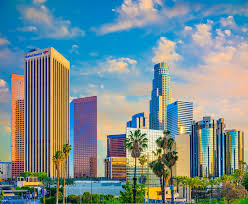In January 2025, Los Angeles faced a catastrophic series of wildfires that devastated vast areas, leading to significant loss of life, property, and environmental damage. The two most destructive fires, known as the Palisades and Eaton fires, wreaked havoc across the region, marking one of the darkest periods in the city’s history.
The Palisades Fire
The Palisades Fire ignited on January 7, 2025, in the Pacific Palisades neighborhood, a coastal area renowned for its affluent residences and scenic beauty. Fueled by dry conditions and powerful Santa Ana winds, the fire rapidly spread, consuming approximately 23,448 acres. The inferno destroyed thousands of structures, including homes, businesses, and landmarks. Notably, the Palisades Charter High School, a site featured in numerous films and television series, suffered extensive damage. The blaze forced mass evacuations, with residents fleeing through gridlocked streets as flames encroached upon their communities. The fire was fully contained by February 1, 2025, but not before causing at least nine fatalities and leaving a lasting scar on the landscape.
The Eaton Fire
On the same day, the Eaton Fire erupted in the foothills of the Angeles National Forest near Altadena. This blaze rapidly expanded, scorching over 14,021 acres and devastating nearly half of the Black households in Altadena, a historic center of Black homeownership. According to a study by UCLA researchers, 61% of Black households were within the fire’s perimeter, with 48% of them destroyed or majorly affected, compared to 37% of non-Black households. The disaster raised concerns about the possible erasure of Altadena’s Black community, known for nurturing prominent Black artists and activists. Local leaders and activists called for more robust support from lawmakers to preserve the community, emphasizing the importance of real estate in maintaining generational wealth. The fire was fully contained by February 1, 2025, but not before causing at least 17 fatalities and leaving a lasting impact on the community.
Contributing Factors
Several factors contributed to the unprecedented severity of these fires. Southern California had experienced an exceptionally dry period, with some areas receiving less than 0.1 inches of rain since early May 2024. This prolonged drought left vegetation parched and highly flammable. The situation was exacerbated by the Santa Ana winds, which reached hurricane-force speeds, fanning the flames and causing rapid fire spread. Climate change has been identified as a significant factor in increasing the frequency and intensity of such wildfires, with rising temperatures and prolonged droughts creating ideal conditions for such disasters.
Impact and Response
The combined impact of the Palisades and Eaton fires was staggering. Together, they burned nearly 60 square miles, destroyed approximately 16,000 structures, and resulted in at least 29 fatalities. The economic losses were estimated to be around $28 billion, making them the costliest wildfires in U.S. history. The fires overwhelmed firefighting resources, leading to water shortages in some areas as hydrants ran dry. Evacuation efforts were hampered by traffic congestion, with some residents abandoning their vehicles and fleeing on foot. In the aftermath, communities faced the daunting task of rebuilding amidst the ashes. Nonprofit organizations, such as The Change Reaction, stepped in to provide immediate financial assistance to affected households, distributing cash payments to help residents meet urgent needs and avoid debt.
Investigations and Accountability
In the wake of the fires, investigations were launched to determine their causes. Southern California Edison (SCE), a major utility company, disclosed that an inactive power line owned by the company may have sparked the Eaton Fire. The company is investigating whether active high-voltage lines transmitted electricity to the inactive line, causing it to ignite the fire. Damage was found on the idle line, which had been out of service since 1971, and its grounding equipment. SCE is committed to enhancing safety practices for idle lines and examining the faulty line in a laboratory. The investigation into the fire’s cause may take months, and SCE could face significant liability costs if their equipment is found responsible. Lawyers are preparing cases against SCE, attributing the fire to faulty grounding equipment on the idle transmission line. This incident highlights the broader risks associated with idle transmission lines and echoes previous cases, such as PG&E’s involvement in the Kincade fire in 2019.
Lessons and Future Preparedness
The 2025 Los Angeles wildfires underscored the increasing threat posed by wildfires in urban areas, a phenomenon exacerbated by climate change. The fires highlighted the need for comprehensive fire management strategies, including improved land use planning, updated building codes, and enhanced emergency response systems. Communities and policymakers are now grappling with the challenge of rebuilding in a way that mitigates future risks, acknowledging that such disasters may become more frequent in the years to come.
As Los Angeles moves forward, the resilience and solidarity of its communities will play a crucial role in recovery efforts. The lessons learned from these fires will inform future strategies to protect the city and its residents from the ever-pre
sent threat of wildfires.


